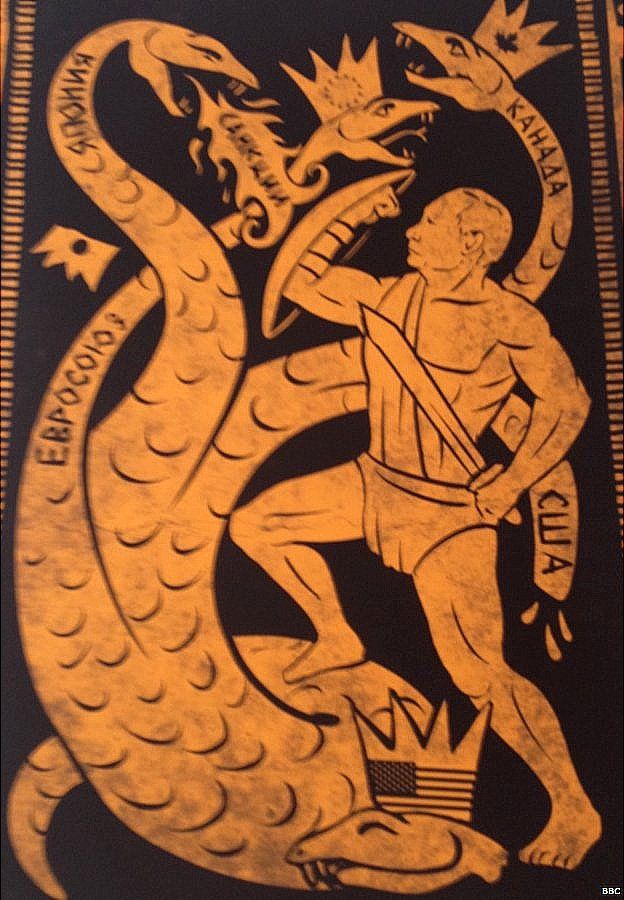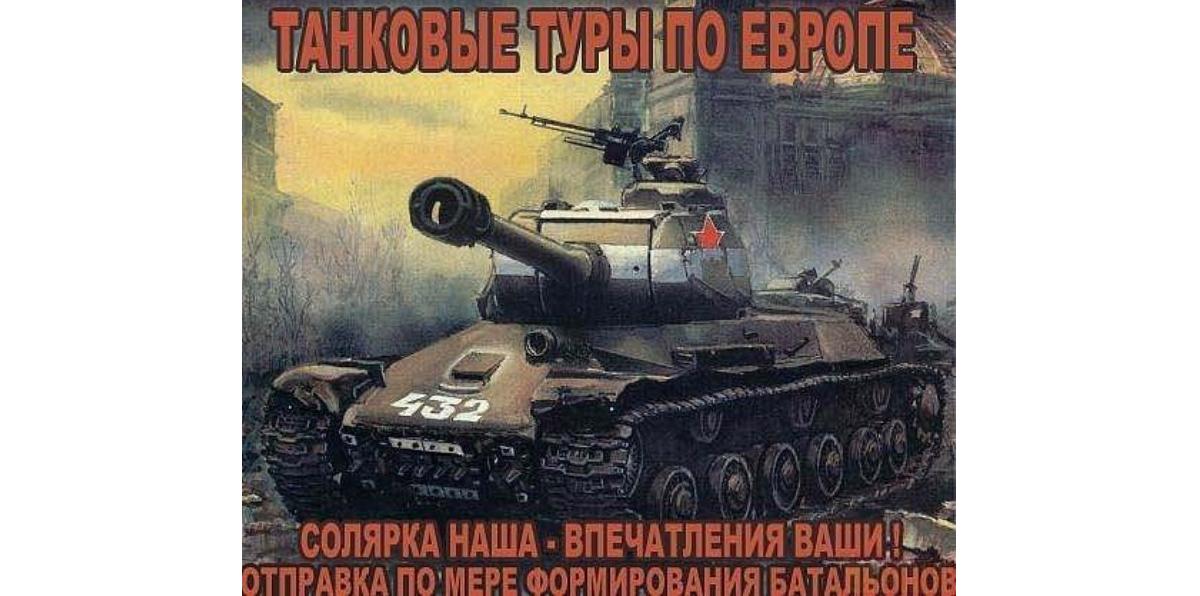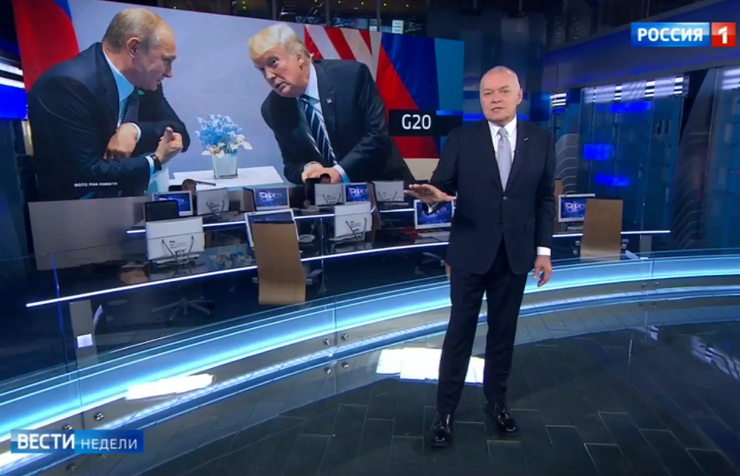Imantas Melianas: “We have been declared a full-scale ‘Russian World’”
Vilnius, August 8 (New Region) – The Russian government’s initiatives in the last months on the international arena and inside the country, which are less than comprehensible from the point of view of common sense, evoke more and more questions as to where Putin and his team are leading Russia and what they seek to gain as a result. Lithuanian ethnoconflictologist Imantas Malianas answered these and other questions in simple terms in one of his works, “Theory and practice of Eurasianism as an instrument of destabilization and disintegration of bordering states.”
The invented “Russian World”
It is already obvious that the current Russian government is using terms of its own invention, like “Russian compatriots,” “Russian-speaking citizens” and “Russian World” to destabilize and fragment neighboring states.
By themselves, these words are completely harmless, which cannot be said for their ominous content.
According to the Russian Federation law of 1999, “foreign Russian compatriots” are all people who come from the former united state (the Russian Empire, the Russian Republic, the Russian SSR, the USSR and the Russian Federation), who speak Russian, feel their spiritual and cultural connection to Russia, which are loyal to it and maintain contacts with the Russian Federation.
Potential “compatriots” are not only considered to be the ethnic Russians spread worldwide, as well people of other nationalities who came from the Russian Federation, but also citizens of all territories which once belonged to Russia at a certain time, including the Great Finnish Principality, the Polish Kingdom, Alaska with all of its natives, Eskimos and Aleutians, and, it goes without saying, ourselves – various Balts, Caucasians, Middle Asians, Ukrainians and Belarusians.
It is enough to be able to speak Russian, feel some sort of mythical “spiritual connection” with the Motherland (for example, the USSR) and maintain contacts with the Russian Federation (through embassies or some other Russian structures).
Obviously, by using such a broad definition of the term “compatriots,” Russia empowered itself to “protect” and “care for” so-called “compatriots” in any part of the globe and, using this, to intervene in internal affairs of various (especially neighboring) countries.
The new monster – “Eurasian Union”
In a certain way, a type of the term “compatriots” is another euphemism – the so-called “Russian-speaking citizens,” whom Russia also strives to “defend” on all of post-Soviet spaces.
Usually, “Russian-speaking people” includes everyone who can speak Russian and who is thus more susceptible to propaganda that is being spread by Russia, especially in the case, when all of this deals with the preserved nostalgia for the “good old” Soviet days. It is not surprising that with such an approach, the politicized category of “Russian-speaking citizens” also includes such various groups as Lithuanian Poles, Moldavian Gagauses and Georgian Ossetians.
And there, on the territories that contain “compatriots” and other “Russian-speaking folk,” not just a war has been declared – we have been declared a full-scale “Russian World,” which is manifesting before our eyes through the so-called “Russian Spring.”
In any case, the contours of this “Russian World” are suspiciously reminiscent of the contours of the former USSR, therefore it would not be too long a shot to say that the “Russian World” is simply a working title of the project, after the execution of which humanity will be presented with a new monster entitled “the Eurasian Union.” And it is not surprising that one of the favorite tools of modern Eurasianists is ethnic engineering.
Ethnic engineering
Ethnic engineering was studied and developed back in the times of the Soviet government.
This was when they learned to break up single peoples into pieces. For example, Adigs into Adigeys, Cherkeses and Kabardins, Tauls –onto Karachayevs and Balkars, Komi – into Komi-Zyrians and Komi–Permyaks etc. Or vice verse – a single nation was declared of representatives of ethnicities that had separate languages, separate titles and separate consciousness. This is how Erzyans and Mokshans became Mordva, Digors became Ossetians, Kumandins, Telengits and some other peoples living near by – Altai people and so forth.
Throughout the entire Soviet period, various Soviet and autonomous republics, autonomous oblasts and districts were constantly created and eliminated, united and separated, increased and decreased in size, their status changed numerous times, as well as their borders and even names.
All of this sought two main goals:
- Impose complications into the establishment of a set self-consciousness of the representatives of the country’s ethnic groups.
- Provoke inter-ethnic tension among the representatives of these groups as to their various status, territorial issues and so forth, meanwhile casually reminding them that the head and only judge in such issues if Moscow exclusively.
Russia took over the USSR’s standard practice
The need for ethnic-political manipulations grew exponentially by around 1987-1988, when it was clear that the Soviet Union (at least in the shape it had at the time) would not last very long.
In light of this, the party leadership and the KGB made steps in order to direct the energy of national liberation movements of USSR peoples against each other (as is the case with Armenia and Azerbaijan).
Besides, they encouraged the creation of antipodes to national fronts in the shape of various interfronts, inter movements and other black formations. In a number of regions, they took on an ethnic coloring – Russian in Latvia, Estonia and Southeast Ukraine, Russian and Gagauz – in Moldova, Russian and Polish – in Lithuania, Abkhazian, Ossetian and Armenian in Georgia, once again Armenians, as well as Lezginian and Talysh in Azerbaijan etc.
In short, all of this flawed practice and philosophy of its constructors can be brought down to the following: if some republic decides to “break out,” it has to be punished, and punished in the most exemplary way.
Some sort of new “separatism” was immediately declared in such a republic.
As a rule, in a minority-populated border region, which demanded to save the representatives of this minority from rascal titular nationalists.
The unnaturalness of such “separatism” was given away by the fact that usually such “separatists” did not want to gain real state independence, but expressed the will to remain within the USSR (before) or become part of Russia (now).
Even the formations that formally declared their independence (Transnistria, Abkhazia and Tskhinvali region) did it somewhat forcibly, because of Moscow’s calculations in regard to geopolitical conjuncture.
This can be easily said, as the heads of Tiraspol, Sukhumi and Tskhinvali addressed the Russian government numerous times with tearful please to take them as Putin’s citizens. And only recently, a sped-up version of the same project was executed in occupied Crimea, however this time, until the end.
The so-called Nagorno-Karabakh republic has the same “geopolitically necessitated independence,” which was created by Russia’s ally, Armenia, on Azerbaijan soil, where out of the 800 thousand people who lived on the territory before war started, only 130 thousand remain today.
For some reason, we tend to forget that only two European states, Russian and Armenia, are openly and violently infringing on the system of international security, thus pushing the world towards the brink of World War III.
According to the results of the peacekeeping activities of the Minsk OSCE group it is impossible to comprehend whether Armenia is a natural aggressor, or whether it is some neighborly argument among silly Caucasians who have no idea what they want from each other.
Everything I am talking about here happened not only in Transnistria, Abkhazia, Tskhinvali region and Karabakh. Almost the same was observed in 1991 in Northeastern Estonia, where they tried to create a Prinarvian SSR.
A somewhat similar thing happened in Lithuania as well,
where at first (in 1989), the plans to create an Eastern Polish SSR were announced (besides Vilnius krai, it was supposed to include also Western Ukraine and Western Belarus), but then Moscow “calmed down” and limited itself to creating a Polish National territorial krai within the already non-existent “Lithuanian SSR.”
Separatist games in Ukraine, Moldova and Georgia
I am far from thinking that Lithuanian-Polish (among many) interethnic arguments don't have historical roots, but in this case I have to especially note the obviously external reasons of their escalation, their certain time and political context.
Meanwhile separatist games began in Ukraine (in its Southeast and in Crimea, as well as Zakarpattya – the project titled “Republic of Near-Carpathian Rus”) and in Moldova, where, besides Transnistria, there were also the “Gagauz” and the later added “Bulgarian” issue.
They tried to quietly take away Georgia’s Adjaria, governed by Aslan Abashidze’s clan (before 2004) and make another one, a Georgian, “Karabakh” in Dzhavakhetia. It didn’t work.
Meanwhile they “taught” Azerbaijan too, in the North of which they tried to declare the Lezgin Autonomous SSR starting 1989, which expressed its ardent desire to join the Russian SSR in a timely manner.
And in 1993, at the height of Armenian advances, the creation of the Talysh-Mugansk republic was declared in the southeast of Azerbaijan.
Putin and the Satanic “Russian World” plan
The new loop of tension has to do with Vladimir Putin’s accession to power and his armament with the theory and practice of Eurasianism.
Of course, it is difficult to consider an incoherent intertwine of Russian chauvinism, imperial messianism and Soviet nostalgia a theory, however everything has a common denominator – loyalty to Putin and his “state” politics.
Various forms of Eurasianism adapt to the characteristics of world views of both left-wing and radical right-wing populists, and to the urban consciousness overall, which has been poisoned with 15-year-long TV acid.
The Eurasian conglomerate is varied in its organization. More famous than others are the so-called “neo-Eurasianists” A. Dugin and his International Eurasian Movement and the Youth Union of Eurasia, but they are being chased by such young and enthusiastic peers such as “people’s Eurasianists,” Pavel Zarifullin and Vitaliy Trofimov, with their International people’s rights protection movement, International Lev Gumilev Center, Center for modern geopolitics and Center for strategic ethnography.
There is also something akin to the Eurasian Komsomol in the shape of the head of the Eurasian Youth Movement “Young Eurasia” Igor Kofner and the chairman of the Eurasian Youth Parliament Andranik Nikogosian.
With all of this seeming competition between these Eurasian “think tanks,” they are united by a common hatred towards the Western world and democratic social values in general.
The leading bodies of these groups include people from Putin’s inner circle, and on the contrary, the informal formations which make fateful decisions for Russia (and for its neighbors, too, unfortunately), for example the famous “Izborsk Club,” the majority are Euroasians and people tied close to them.
They are also part of the influential Eurasian information league. In this light their activity should not be seen just as tricks of some radicals and intellectual marginals. Unfortunately, both they and their “creativity” turned out to be highly in demand.
The volume of the report does not allow me to present quotes from the broad document entitled “Project of the Agreement of the creation of the Eurasian Union” prepared by the Eurasianists.
Of course, it is not an official document of the Russian state, however familiarization with it increases the understanding of what is happening quite well, as well as the main outlines of this devilish plan.
The doctrine of Putin’s regime
And all of this is not only happening on Ukrainian soil. The so-called “Gagauz issue” is pertinent again which, as has been mentioned before, became “Gagauz-Bulgarian” (I mean the unrest in Tarakli region).
Pressure on Azerbaijan is increasing as well (“either you quickly join the Customs Union or we set up a couple of “Karabakhs” – Lezgin and Talysh).
And here is the latest news – the insufficiently subordinate Uzbekistan has been punished with the emergence of the Karakalpaksk movement, which demands that this autonomy become part of Russia, or (“worst case scenario”) Kazakhstan. As we can see again, the unbeatable pull of the “Russian World…”
What can be concluded from all of this? I think that it is important to make an obvious conclusion that all the aforementioned “separatism” and the “frozen” (and quite “hot”) conflicts that followed are the result of the execution of Russia’s single plan to destabilize neighboring states.
According to the Eurasian doctrine, which became the guiding light for Putin’s government, this destabilization is used in order to force neighboring states to admit Russia’s superiority in order to become part of the over-state formations governed by it (Customs Union, Collective Security Treaty Organization etc.), which will further be transformed into a more close-knit political construction called “the Eurasian Union.”
According to the aforementioned plan (its reconstruction), in case when the candidate states marked by Moscow are against such a geopolitical perspective, they are “punished” by having part of their territory confiscated, by the use of questionable historical and ethnographic arguments.
The West has turned a blind eye to the doll master and his marionettes for a long time
The understanding of the joint fates of the states that suffered from Russia’s “Eurasian” politics (as well as its ally, Armenia), Ukraine, Moldova, Georgia and Azerbaijan (as well as the Chechen Republic of Ichkeriya with its 1997-1999 independence process that was interrupted artificially) demands a similarly universal policy to eliminate the consequences of “Eurasian” expansion.
The NATO and other countries of the civilized world have to admit their part of the blame for what is happening in Ukraine, as it only became possible since there had been no timely and adequate reaction to the aggressors’ actions in the past.
A united and complex approach to solving this problem has to become compulsory not only for the states and international organizations of the West, but for the international expert community as well. But first and foremost this paradigm has to be taken up as a weapon by the states that suffered (and continue suffering) from “Eurasian” expansion.
If we make attempts to return Crimea to Ukraine – we have to also mention Transnistria, Abkhazia and Karabakh; if we fight for the liberation of Tskhinvali region – we mention Donbas and Ichkeriya; if we warn Armenia against occupying Karabakh for the last time – we draw analogies with Crimea, Abkhazia and Transnistria.
Would this constitute “internationalising the conflict?” Yes, if you would, but such an approach become essential, as it will not weaken but strengthen the positions of all those who are fighting for the good cause of silencing the instigators of World War III.
How long can we go on pretending that cannot see the doll master himself but only his marionettes (knowing quite well that he, the “doll master,” understands all of this very well)?
Otherwise not only the enemy, but the entire international community will be given reason to doubt the sincerity of the ardent statements made by the leaders of these countries and various “intermediaries in solving the conflict,” and, as a result, the necessity to continue lending them various forms of help in the future.
Source: NR
Translated by Mariya Shcherbinina




